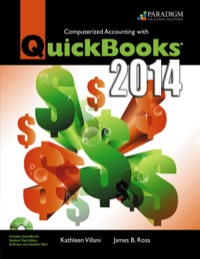Answered step by step
Verified Expert Solution
Question
1 Approved Answer
You are employed as the cost accountant of Metro Building Contractors, and your company produces three types of building materials; Metro-bricks, Metro-floor tiles and Metro-roof


You are employed as the cost accountant of Metro Building Contractors, and your company produces three types of building materials; Metro-bricks, Metro-floor tiles and Metro-roof tiles. Metro-bricks are usually bought by large-scale construction companies, Metro-floor tiles and Metro-roof tiles are bought by medium-sized construction companies. The demand for the three types of building products always exceeds your company's production capacity. Therefore, product mix decisions have to be made to determine the optimum production quantities for each product using the relevant costing strategy. The following information is provided: Metro-bricks VC = R35 Metro-floor tiles VC= R54 Metro-roof tiles VC= R71 Materials cost R 18.00 R 27.00 R 50.00 Direct labour R 10.00 R 16.00 R 13.00 R 8.00 Variable overhead R 7.00 R 11.00 cost Fixed overhead cost R 6.00 R 8.00 R 7.00 Total unit costs R 41.00 R 62.00 R 78.00 Production volume 57 000 28 500 20 520 and sales Fixed overhead costs are allocated to products based on direct labour hours. Direct labour rate is R10.00 per hour. Materials cost R 9.00 per kg. Direct material are limited to 285 000kg per annum due to procurement logistics. Your marketing manager has accepted an order for 7 125 Metro-bricks, 1 425 Metro- floor tiles and 2 166 Metro-roof tiles. If your company fails to fulfil any part of the order, it will be obliged to pay a penalty of R 28 500. 108 HMAC200-1-July-Dec2021-Sample SA1-Memo-CTM-V.1-03082021 Annexure L: Sample summative Assessment 1 Memorandum The selling prices for the three types of building products are given below: Unit sales Metro-bricks R 50 Metro-floor tiles R 73 Metro-roof tiles R 88 Pequired Required Calculate the following: 1.1 The available capacity for scarce materials 1.2 By how much the budgeted material exceed available capacity 1.3 The contribution per limiting factor 1.4 How the scarce material should be allocated 1.5 Profit arising from production (11 marks) (3 marks) (12 marks) (10 marks) (10 marks) NB: show all relevant workings. You are employed as the cost accountant of Metro Building Contractors, and your company produces three types of building materials; Metro-bricks, Metro-floor tiles and Metro-roof tiles. Metro-bricks are usually bought by large-scale construction companies, Metro-floor tiles and Metro-roof tiles are bought by medium-sized construction companies. The demand for the three types of building products always exceeds your company's production capacity. Therefore, product mix decisions have to be made to determine the optimum production quantities for each product using the relevant costing strategy. The following information is provided: Metro-bricks VC = R35 Metro-floor tiles VC= R54 Metro-roof tiles VC= R71 Materials cost R 18.00 R 27.00 R 50.00 Direct labour R 10.00 R 16.00 R 13.00 R 8.00 Variable overhead R 7.00 R 11.00 cost Fixed overhead cost R 6.00 R 8.00 R 7.00 Total unit costs R 41.00 R 62.00 R 78.00 Production volume 57 000 28 500 20 520 and sales Fixed overhead costs are allocated to products based on direct labour hours. Direct labour rate is R10.00 per hour. Materials cost R 9.00 per kg. Direct material are limited to 285 000kg per annum due to procurement logistics. Your marketing manager has accepted an order for 7 125 Metro-bricks, 1 425 Metro- floor tiles and 2 166 Metro-roof tiles. If your company fails to fulfil any part of the order, it will be obliged to pay a penalty of R 28 500. 108 HMAC200-1-July-Dec2021-Sample SA1-Memo-CTM-V.1-03082021 Annexure L: Sample summative Assessment 1 Memorandum The selling prices for the three types of building products are given below: Unit sales Metro-bricks R 50 Metro-floor tiles R 73 Metro-roof tiles R 88 Pequired Required Calculate the following: 1.1 The available capacity for scarce materials 1.2 By how much the budgeted material exceed available capacity 1.3 The contribution per limiting factor 1.4 How the scarce material should be allocated 1.5 Profit arising from production (11 marks) (3 marks) (12 marks) (10 marks) (10 marks) NB: show all relevant workings
Step by Step Solution
There are 3 Steps involved in it
Step: 1

Get Instant Access to Expert-Tailored Solutions
See step-by-step solutions with expert insights and AI powered tools for academic success
Step: 2

Step: 3

Ace Your Homework with AI
Get the answers you need in no time with our AI-driven, step-by-step assistance
Get Started


